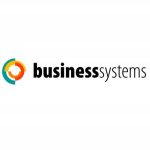Today’s contact centres face more demand than ever. With consumers having grown used to faster and more personalised services, and agents expecting better working environments, there are a lot of relevant concerns. Fortunately though, there are a lot of ways for those managing call centres to adapt to these demands and challenges.

With that in mind, here are 10 specific tips for the modern contact centre.
1.Embrace Communication Software
Gone are the days when business teams had to communicate solely through email and various instant messaging platforms. Now, more and more often, companies are turning instead to multi-faceted communication software platforms that streamline interactions both between and within teams. A list by Business.com revealed some of the most popular options (HipChat, Slack, Campfire, and more), if you want to look at some specific possibilities. By and large though, these programs help teams to interact more precisely and efficiently. This can make for a significant improvement in a modern contact centre. It makes it easier for employees to share results and discuss problems; it gives management a direct channel to the whole contact centre team; and it can help put anything from guidelines to result tracking all in one place that can easily be found and referenced.
2. Consider a Chatbot
Building a chatbot into a website and/or app is not necessarily a way of replacing contact centre employees. Rather, it’s a way of making their jobs easier. A sophisticated chatbot can welcome customers, address the most basic concerns, and otherwise direct them to the more in-depth help they need. These functions effectively eliminate some of the more tedious aspects of customer care, allowing those working in the contact centre to devote more attention to more pressing needs.
3. Put Functions on the Cloud
Almost the same way that communication software can keep teams on the same page, putting all customer service apps and functions into a unified cloud environment can help to organise a modern contact centre. Our coverage of CXonefrom NICE inContact, back in 2018, spoke about this idea in some detail. As we stated then, cloud service of this kind can “keep customer service teams productive and engaged” — particularly for larger companies that might be spread out across multiple locations.
4. Set Clear Performance Goals
This is less of a tech-based adjustment than some of the other ideas mentioned here. However, it’s still an idea for contact centres to embrace. More and more companies today seem to be recognising the benefits of clear performance structure. This means making it as clear as possible what team members are expected to accomplish, and when. When good performance is ambiguous, or judged after the fact, teams can often operate less efficiently; with clear goals put in place and made accessible, employees in a contact centre will be able to work steadily toward specific ends.
5. Establish Rewards for Those Goals
The second half of the previous idea is to make sure there are rewards for goals reached as well. This doesn’t mean that every team member gets to earn a raise on a regular basis for hitting weekly or monthly goals. In fact, a “reward” can be as simple as a kind word from management — or even a positive message in a tracking sheet (such as “Weekly goal met!!” in a tab alongside an employee’s name). Or, of course, a company can get creative with some sort of system revolving around point accumulation, small bonuses and the like. Whatever the case, providing incentives makes the idea of clear performance goals that much more effective.
6. Embrace Data Analytics
Data collection in contact centres can go a long way toward generating more business for a company. Over time, it can involve numerous specific initiatives: seeing which communications convert to sales; determining when the most customer engagement occurs; figuring out which communication methods customers most prefer; even recognising how long calls are before they result in customers leaving or hanging up. Unfortunately not all modern contact centres are equipped to handle this level of data collection and analysis, which is why this may be one area in which to consider an outside hire. A guide by Comeet on questions to ask in a data analyst interview can give managers a good idea of what to look for in this sort of hire. Namely, said guide conveys that a data analyst should understand relevant software, have an idea of how to organise a project, and be familiar with the company and industry at hand.
7. Train with Gamification
Gamification can be a somewhat vague concept, and is often misunderstood as having to relate directly to actually playing games. Really though, it more closely refers to taking some of the elements that make good games popular — the things that make people keep playing, or push them to achieve more — and applying them to another practice. Thinking of it this way, you can begin to see how gamifying training can be effective. The specifics will be different for different companies and contact centres, but teaching relevant software programs and team practices this way — with progressive “levels” of difficulty, incentive and reward structures, and so on — can actually make team members eager to improve and get to work.
8. Embrace Screen Sharing
Screen sharing is a function being used more frequently in many different aspects of modern business. A feature by Techspective states that screen sharing can “improve efficiency, flexibility, and collaboration in the workplace.” But it can be particularly helpful in some contact centre situations. For those who aren’t familiar with it, screen sharing essentially means that one person can broadcast his or her screen activity on another person’s device. When it comes to contact centres, this means equipping employees to show customers exact demonstrations when necessary. It can be significantly more efficient and effective than merely speaking or emailing back and forth, at least in addressing certain problems.
9. Support Breaks & Time Off
This is important in modern business in general, but certainly applies to call centres as well. Putting it simply, today’s employees — particularly in places like call centres — are being asked to spend long hours working hard and interacting with technology. As a result, there’s never been more need for regular breaks and adequate time off. Tech.co put it nicely from the employee perspective, stating a few years ago that “work-life balance is more important than ever” to today’s workers. By accommodating this need, a contact centre can both keep employees happy and, in all likelihood, ensure that they’ll be more productive while working.
10. Make the Physical Environment Appealing
Finally, it’s also important to make the physical environment of a call centre as appealing as possible. This can be done in any number of ways, including the use of some modern technologies (such as “smart” systems to regulate temperature and make the environment generally more responsive). But the idea is to foster a sense of wellness. Again, today’s call centre workers typically put in long hours that are heavy on tech use. Making them comfortable while they’re doing so can keep them content and productive.
![]()
 Business Systems (UK) Ltd specialises in providing workforce optimization technology solutions and today ranks as one of the industry’s most experienced and innovative providers of call recording platforms. The company’s expertise covers systems design, project management, implementation and ongoing service delivery-support. BSL is the UK’s largest and most established independent call recording specialist extending its global reach through specific associated partners. Founded in 1988, the company has built an impressive reputation for implementing complex projects on time and counts amongst its clients, institutions such as The Bank of England and Standard Life.
Business Systems (UK) Ltd specialises in providing workforce optimization technology solutions and today ranks as one of the industry’s most experienced and innovative providers of call recording platforms. The company’s expertise covers systems design, project management, implementation and ongoing service delivery-support. BSL is the UK’s largest and most established independent call recording specialist extending its global reach through specific associated partners. Founded in 1988, the company has built an impressive reputation for implementing complex projects on time and counts amongst its clients, institutions such as The Bank of England and Standard Life.
For additional information on Business Systems view their Company Profile


